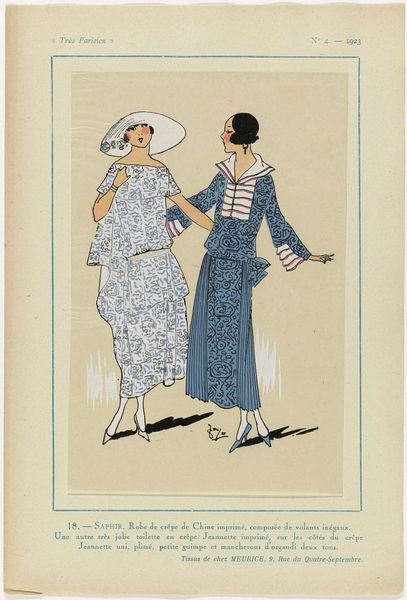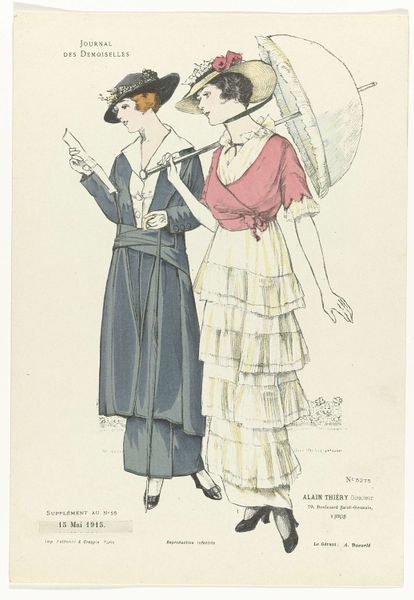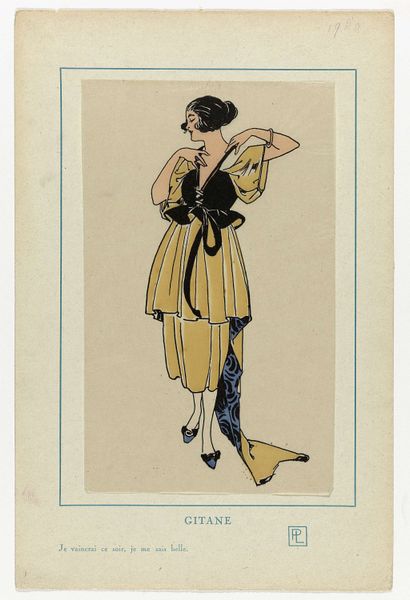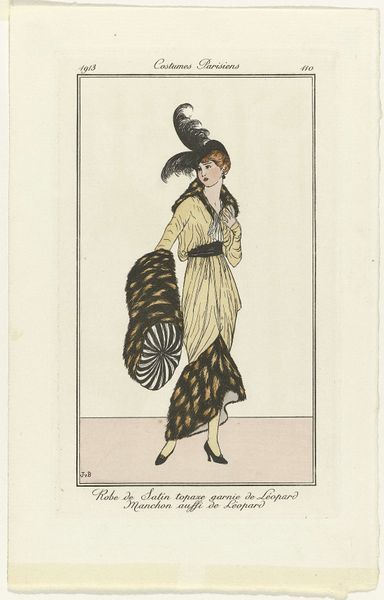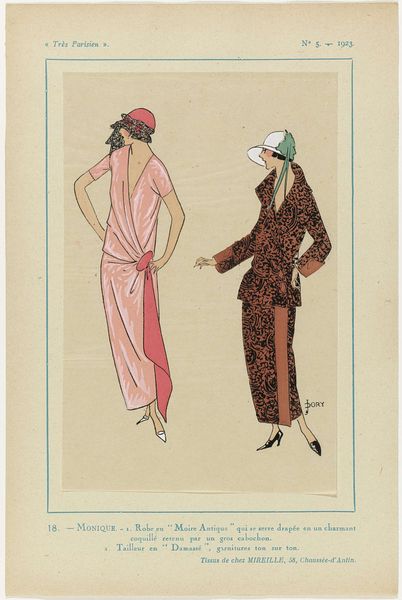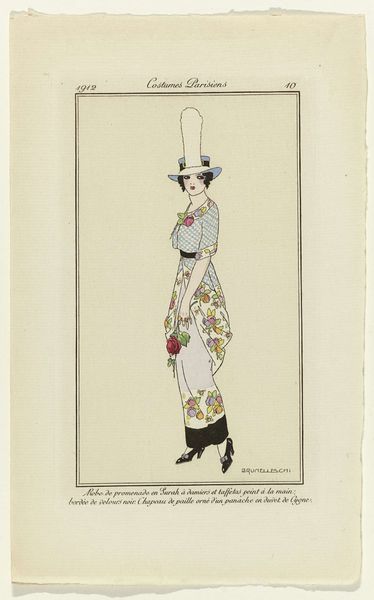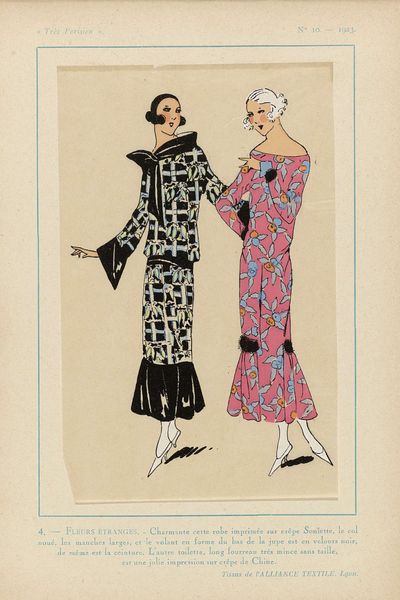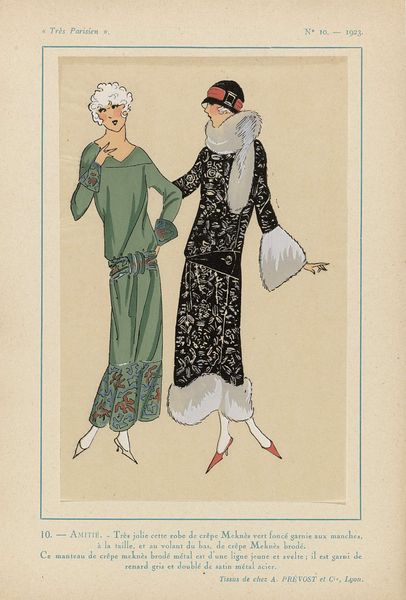
#
portrait
#
art-nouveau
# print
#
figuration
#
cartoon style
Dimensions: plate: 17.1 x 12 cm (6 3/4 x 4 3/4 in.) sheet: 22.4 x 14.3 cm (8 13/16 x 5 5/8 in.)
Copyright: National Gallery of Art: CC0 1.0
Editor: Here we have "Chapeaux et parasols de la haute-saison," or "Hats and Parasols for High Season," a print from 1919. It features these women with stylish hats, stacked on top of one another, and the colours are just so charming! What strikes you when you look at this piece? Curator: What I see is a fascinating reflection of early 20th-century society through the lens of fashion. These aren’t just images of hats and parasols; they're representations of a very specific ideal of femininity and luxury that was being marketed to women. Who had access to these fashions and the lifestyle they represented, and who was excluded? Editor: So, it's more than just pretty hats? Curator: Exactly. Consider the historical context. 1919 is post-World War I. Women’s roles were rapidly changing, yet societal expectations remained rigid. This print, appearing in a fashion almanac, participated in shaping and reinforcing those expectations. Who was making these almanacs, and for what purposes? Editor: That's a great point, I didn't really consider the societal implications behind the fashion being displayed. Is it maybe attempting to confine the women into outdated moulds of femininity? Curator: Precisely! And consider how the Art Nouveau style itself—with its emphasis on ornamentation and idealized forms—contributes to this narrative. What kind of social pressures do you think images like this created? Editor: Now I’m starting to see how this seemingly lighthearted image can be interpreted through a much more critical lens. I was only looking at it from a visual perspective. Curator: Right! We have to consider art within the context of how these women lived, what kind of limitations were placed on them. Editor: So it’s about recognizing art's role in reflecting and reinforcing, or even challenging, the status quo? I guess I always assumed art pieces displayed beauty standards that people strived to achieve. Curator: Exactly. Examining images like this forces us to ask those hard questions. Hopefully, the way you understand visual imagery is different from the way you did only moments ago. Editor: Definitely. I'll never look at fashion plates the same way again. Thanks!
Comments
No comments
Be the first to comment and join the conversation on the ultimate creative platform.
